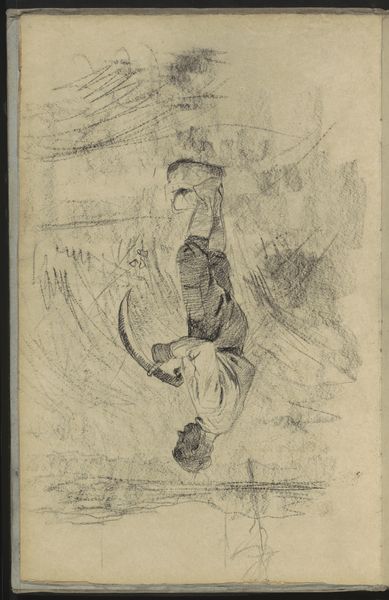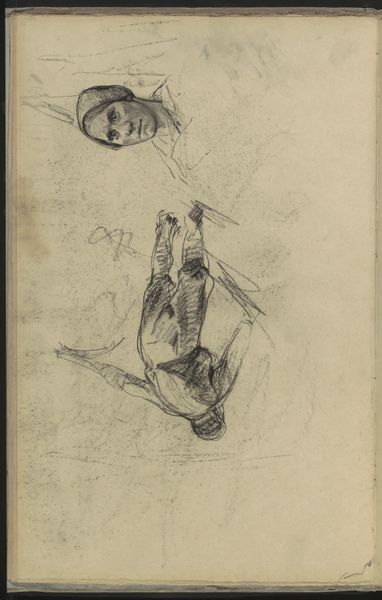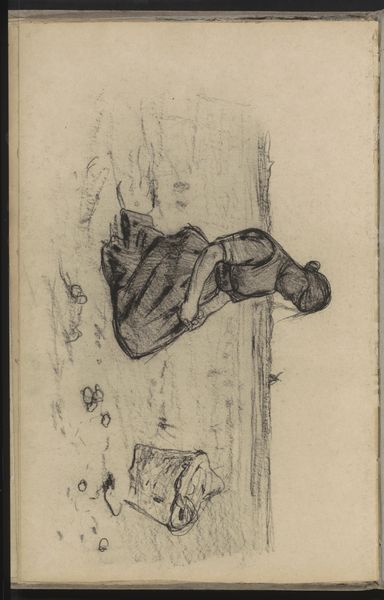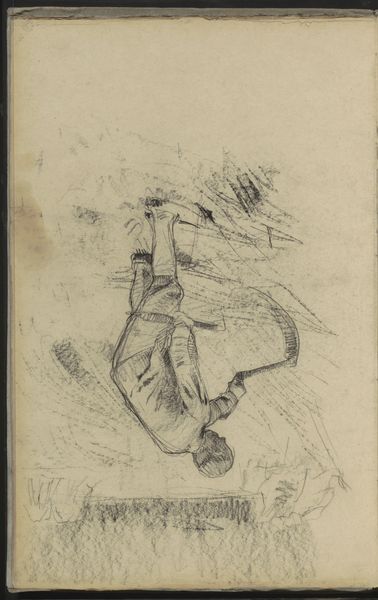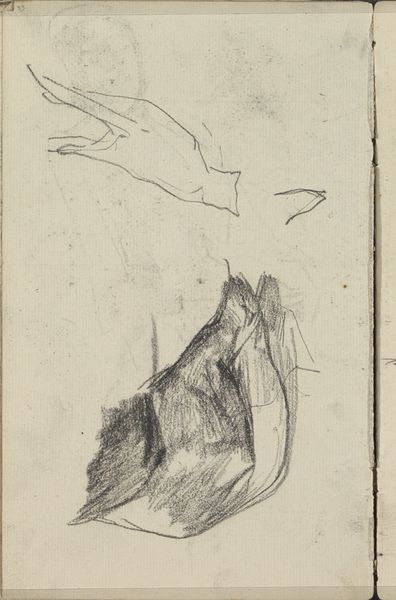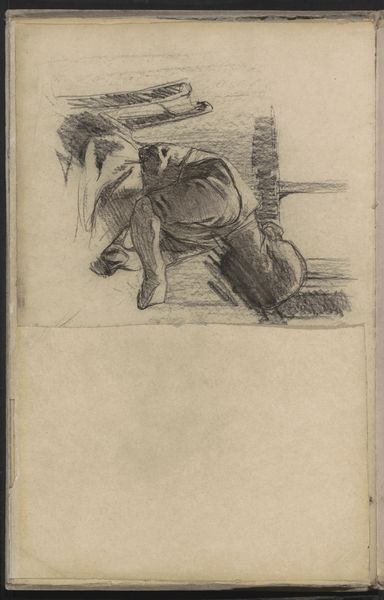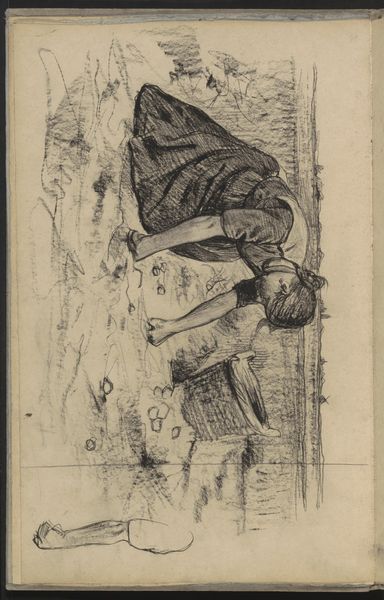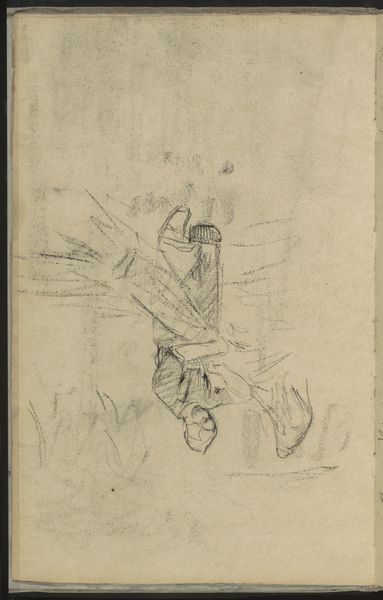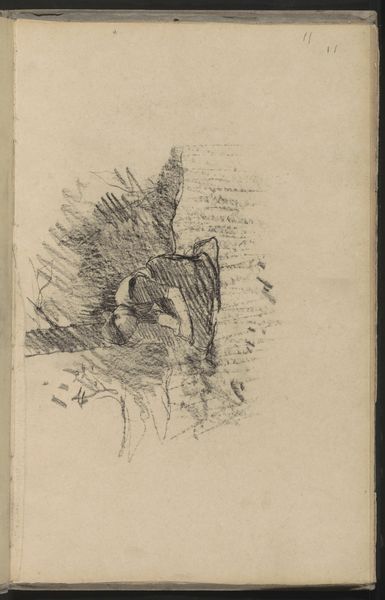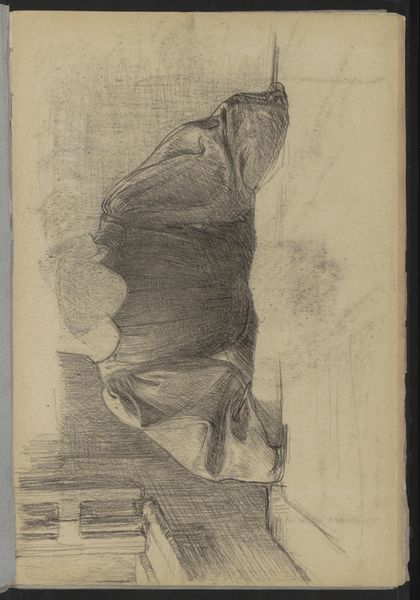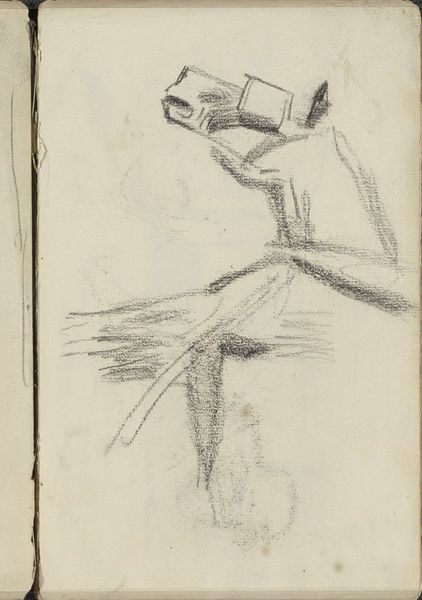
drawing, pencil
#
drawing
#
pencil sketch
#
landscape
#
figuration
#
pencil
#
realism
Copyright: Rijks Museum: Open Domain
Curator: This is a pencil drawing by Willem Witsen, titled "Boer met een zeis op het land," dating from around 1884 to 1887. It now resides here at the Rijksmuseum. Editor: My first impression is one of quiet intensity. It's a very simple composition, really just the farmer and his scythe, but there's something quite powerful in that sparseness. It feels like a captured moment of toil. Curator: Precisely! Witsen’s realism shines through in how he depicts the labor. Note how the diagonal strokes evoke the sweeping movement of the scythe. There’s a raw, almost visceral energy captured with very economic lines. Editor: Those diagonal lines, for me, they’re reminiscent of blades of grass, yes, but also, they speak to a greater cycle. The act of harvesting itself becomes a symbolic cut through time, a participation in a tradition that’s ancient and unending. Curator: Absolutely, I see how you get to a sort of archetypal labor in this work. Editor: Beyond the action, look at the cap and posture of the worker, his bent head; a universal symbol for labor that calls back to the myth of agriculture through the ages. And look how Witsen manages to create such volume and shape using just pencil strokes. The shading around his back creates form. Curator: It's also significant to note Witsen’s connection to the Hague School. There’s a similar subdued palette, but he brings a modern sensibility to this rural subject matter. This is not romantic idealism; it's the reality of a man’s hard work. Editor: Exactly! It’s a portrait of working itself. Looking closely at the details, seeing the subtle variations of pencil on paper; it offers, in a way, the artist working, sketching— labor creating labor. Curator: It’s fascinating how the artwork evokes layers of hard labor, not merely in the field. We could talk about the paper itself, it suggests, doesn’t it, ephemerality but here it has survived, endured. Editor: It does, and seeing the scythe – a somewhat antiquated image even for the time – you get the enduring relationship humans have had with landscape. This really connects to those deeper myths about what it means to cultivate the world around us. Curator: Well said. I think we have both looked deeper here, and perhaps come closer to the very essence of labor.
Comments
No comments
Be the first to comment and join the conversation on the ultimate creative platform.
